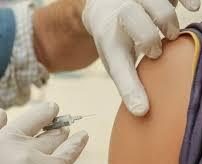COVID-19 Vaccine Priority List

December 13, 2020
With the upcoming approval of a few possible coronavirus vaccines, the CDC’s Advisory Committee on Immunization Practices (ACIP) released their advised list for who should receive the shots first. Although states are not required to follow the list, most are expected to heed the ACIP’s advice. However, the CDC’s director must approve the recommendation first before states can decide on its prominence within their borders. The secretary of the U.S.’s Health and Human Services Department (HHS), Alex Azar, informed CNBC that about 40 million doses of the vaccine will be available by the end of December. The doses will be enough for 20 million people since the Moderna and Pfizer-BioNTec vaccines require two shots per person.
During their committee meeting, ACIP broke down the distribution of vaccines into phases based on the availability of the vaccine. They determined that the first round of vaccines will be provided to healthcare workers— due to their direct contact with affected patients— and the elderly residing in nursing homes and other long-term care facilities. This first phase, in which around 21 million healthcare providers and 3 million elderly will receive the vaccine, is called Phase 1a.
Phase 1a will not just cover the doctors and nurses in hospitals; it will also include others who work in the hospitals, such as the cleaning staff, administration staff, and food delivery staff, and others who help run the institutions. These people also come into close contact with the virus when they clean patients’ rooms, deliver meals to the infected, and manage the front desk of emergency rooms.
Phase 1b and 1c have been outlined but not yet fully discussed. Phase 1b will focus on essential workers such as school staff, police, grocery store workers, and bus drivers. The CDC’s plan for phase 1c is to reach adults above the age of 65 and any adult with a high-risk medical condition.
The CDC also recommended that within each phase, states should provide doses of the coronavirus vaccine to severely affected areas including Black, Hispanic, and low-income communities. Other plans for each state’s distribution order were submitted to the CDC to ensure that the United States will use the most effective strategy to prevent more COVID-19 cases. Some states, including Arkansas, target reaching affected patients, healthcare workers, coronavirus testing personnel, and governmental leaders as the priorities of their initial phases.
Operation Warp Speed, a collaboration between the Department of Health and Human Services and the Department of Defense to efficiently administer the vaccine shipments, will be directed by the states on where and to whom the doses will be delivered. Secretary of HSS Alex Azar and Army General Gustave Perna mentioned that even though the federal government is in charge of providing the vaccine, the governors and public health departments have the ultimate verdict for allocation of their state’s doses over the president.
The United States aims to begin the circulation of the vaccines in as fast as two weeks, but it will be a much longer time for enough doses to be manufactured to reach the general public. Admiral Brett Giroir, the White House’s testing czar, comments, “The rest of America will get it in the second quarter, third quarter of 2021, but we could maximize our impact right now”.

